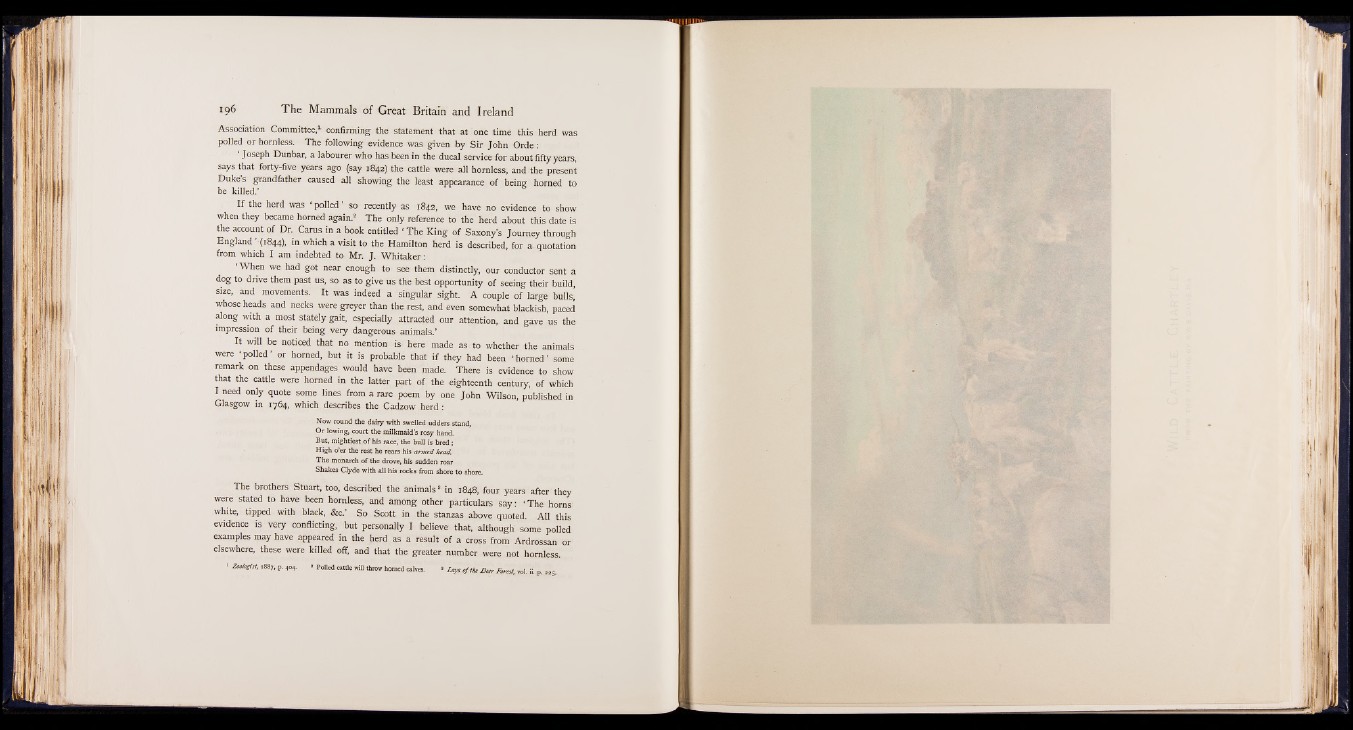
Association Committee,1 confirming the statement that at one time this herd was
polled or hornless. The following evidence was given by Sir John Orde:
Joseph Dunbar, a labourer who has been in the ducal service for about fifty years,
says that forty-five years ago (say 1842) the cattle were all hornless, and the present
Dukes grandfather caused all showing the least appearance of being horned to
be killed.’
I f the herd was * polled so recently as 1842, we have no evidence to show
when they became horned again.* The only reference to the herd about this date is
the account of Dr. Cams in a book entitled ‘ The King of Saxony’s Journey through
England (1844), in which a visit to the Hamilton herd is described, for a- quotation
from which I am indebted to Mr. J. Whitaker:
When we had got near enough to see them distinctly, our conductor sent a
dog to drive them past us, so as to give us the best opportunity of seeing their build,
size, and movements. It was indeed a singular sight. A couple of large bulls,
whose heads and necks were greyer than the rest, and even somewhat blackish, paced
along with a most stately gait, especially attracted our attention, and gave us the
impression of their being very dangerous animals.’
It will be noticed that no mention is. here made as to whether the animals
were -polled’ or horned, but it is probable that if they had been 'horned’ some
remark on these appendages would have been made. There is evidence to show
that the cattle were homed in the latter part of the eighteenth century, of which
I need only quote some lines from a rare poem by one John Wilson, published in
Glasgow in 1764, which describes the Cadzow herd:
Now round the dairy with swelled udders stand,
Or lowing, court the milkmaid’s rosy hand.
But, mightiest o f his race, the bull is bred ;
High o’er the rest he rears his armed head.
The monarch o f the drove, his sudden roar
Shakes Clyde with all his rocks from shore to shore.
The brothers Stuart, too, described the animals8 in 1848, four years after they
were stated to have been hornless, and among other particulars say: 'The horns
white, tipped with black, &c.’ So Scott in the stanzas above quoted. All this
evidence is very conflicting, but personally I believe that, although some polled
examples may have appeared in the herd as a result of a cross from Ardrossan or
elsewhere, these were killed off, and that the greater number were not hornless.
1 Zoologist, 1887, p. 404. * Polled cattle will throw homed calves. * Lays o f the Deer Forest, vol. ii. p. 225.